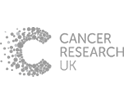
By Petra Nordqvist, Leah Gilman and Hazel Burke
In common parlance, being an egg or sperm donor means donating anonymously via a clinic or bank. This group of donors are often referred to as ‘ID-release donors’ because, since 2005, their identity ...
Want to see the rest of this article?
Would you like to see the rest of this article and all the other benefits that Issues Online can provide with?
- Useful related articles
- Video and multimedia references
- Statistical information and reference material
- Glossary of terms
- Key Facts and figures
- Related assignments
- Resource material and websites

 Can ‘known’ donors show us the future of egg and sperm donation?
Can ‘known’ donors show us the future of egg and sperm donation?








